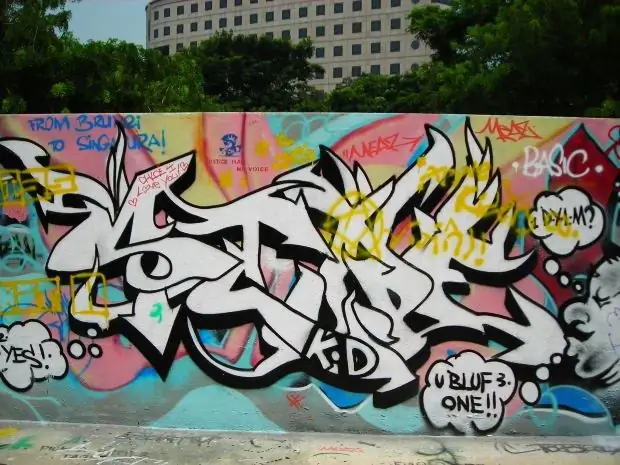Graffiti is becoming more and more popular nowadays. The attitude towards this art is ambiguous: some people even consider it to be pampering and hooliganism, since graffiti is often painted on fences and walls. However, it cannot be denied that among the writers there are recognized geniuses who create real masterpieces.

Instructions
Step 1
Look carefully at other people's graffiti, study them. Observing does not mean copying other people's ideas. You just have to learn from more experienced writers and avoid newbie mistakes. Memorize both successful and unsuccessful works, so that it will be easier for you to create something of your own later.
Step 2
Start drawing with pencil on paper. The most common mistake novice writers make is trying to paint something on a building as soon as possible so that everyone can see and appreciate its work. However, in most cases, beginners only spoil the walls with low-quality drawings. Stock up on scrapbooks, pencils, erasers, and markers and exercise as much as possible.
Step 3
Try copying some of the more basic work of professional writers first. Start with 2D images, and only then move on to 3D. Use different colors and shades to make the image more vivid and effective: even the simplest and most unpretentious color drawing often looks more beautiful than a complex black and white.
Step 4
Learn to draw letters. The simplest style a beginner can master is the bubble style. Drawings in this style are rounded and resemble bubbles. Just draw a large block letter on a piece of paper, and then try modifying it by removing the corners and giving the drawing a rounded shape. Draw individual letters first, and then try to write something using the graffiti technique.
Step 5
Try to write your name. Many beginners use the name or nickname to create a tag - a unique signature of a writer. Practice until you can draw the tag easily and without mistakes.
Step 6
When you learn how to create color drawings, try to depict some black and white. Experiment with pressure, hatching, line width. Three-dimensional black-and-white drawings do not come out right away, so practice as much as possible.
Step 7
After learning how to draw well with a pencil, marker and paints, go to the streets of the city. Do not improvise until you are confident: draw first on paper, and then transfer the drawing to the wall.






